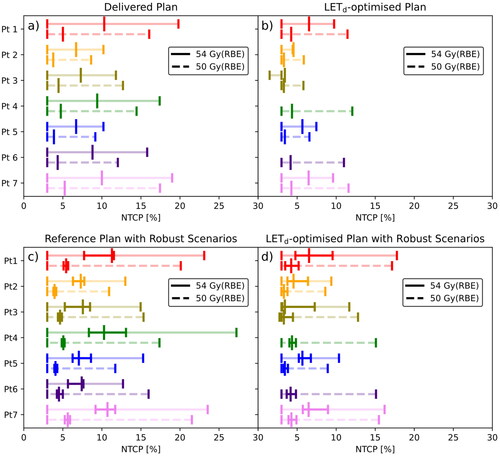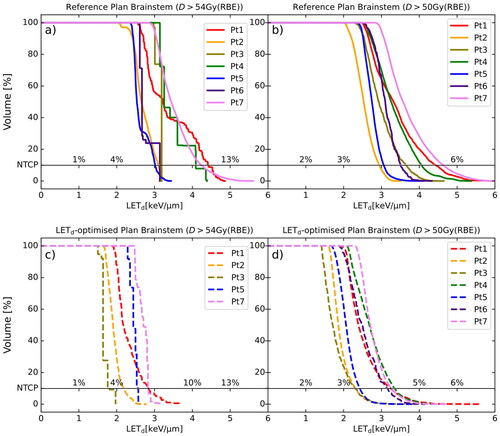Figures & data
Figure 1. NTCP estimates for all seven patients. a) NTCP from the delivered plans simulated in TOPAS. The point estimate is given by the tallest vertical line while the 95% confidence interval is shown with the slightly transparent line and shorter vertical lines. NTCP54Gy(RBE) is shown with a full line while NTCP50Gy(RBE) is shown with a dashed line. b) NTCP from the LETd-optimised plans where the lines represent the same as in subfigure 1a. c) NTCP from the reference plan in Raystation where robustness scenarios are included with the full horizontal line and the inner short vertical lines. The 95% confidence intervals correspond to the lower and higher robustness scenarios and are, as in subfigures 1a and 1b, also shown by a slightly transparent line. d) NTCP from the LETd-optimised plans in Raystation where the representation is the same as subfigure 1c.

Figure 2. LETd-volume histograms showing brainstem LETd for all patients. a) is the LETd in the brainstem volume receiving dose over 54 Gy(RBE) from the reference plans recalculated in Raystation. NTCP54Gy(RBE) is shown with the horizontal line and shows the L10% for each Curve. b) is the LETd in the brainstem volume with dose over 50 Gy(RBE) from the recalculated reference plans and NTCP50Gy(RBE) shown as a second axis. c) shows a similar plot as subfigure 2a except it shows the curves for the LETd-optimised plans instead while d) is a corresponding plot to subfigure 2b for the LETd-optimised plans.

Supplemental Material
Download MS Word (405.9 KB)Data availability
The participants of this study did not give written consent for their data to be shared publicly, so due to the sensitive nature of the research supporting data is not available.

